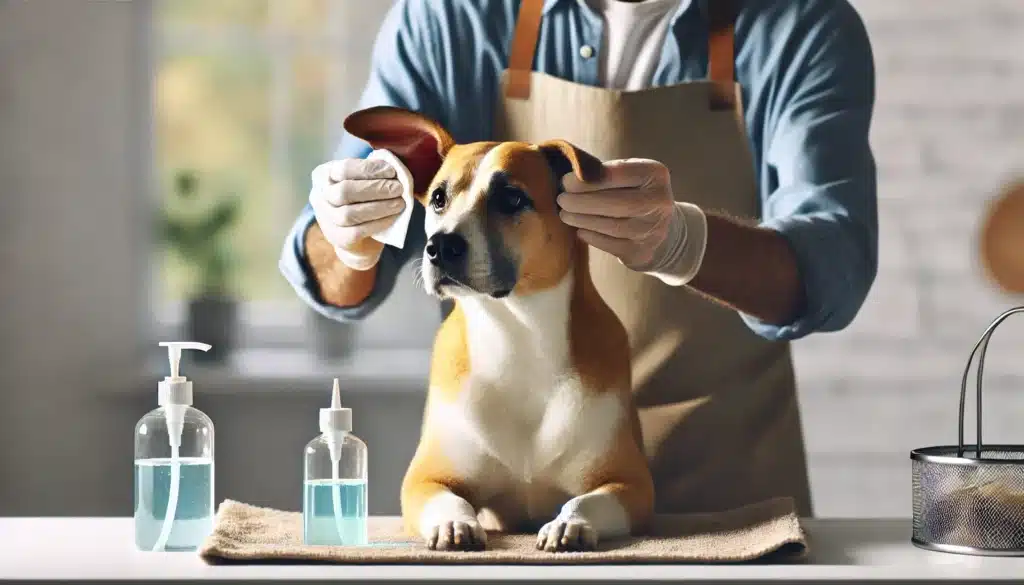Your dog’s ears are sensitive, complex, and prone to buildup — especially in floppy-eared or hairy breeds. Regular ear cleaning can prevent infections, discomfort, and expensive vet visits. But improper cleaning can do more harm than good.
In this detailed guide, you’ll learn how to clean your dog’s ears safely, how often it should be done, what products to use, and signs to watch for that may indicate an ear problem.
Why Dog Ear Cleaning Matters
Dogs explore the world with their senses — and their ears are often exposed to:
- Dirt, moisture, pollen, or dust
- Earwax buildup
- Debris from water, play, or digging
- Yeast and bacteria, especially in moist environments
Neglecting ear hygiene can lead to:
- Ear infections (otitis externa)
- Itching and scratching
- Unpleasant odor
- Hearing loss if untreated
Some breeds — like Cocker Spaniels, Basset Hounds, Poodles, and Golden Retrievers — are especially prone to ear problems due to ear shape or hair growth.
How Often Should You Clean Your Dog’s Ears?
It depends on breed, activity level, and health history:
| Dog Type / Condition | Cleaning Frequency |
|---|---|
| Floppy or hairy ears (e.g. Poodles) | Weekly |
| Active dogs (e.g. swimmers) | Weekly or biweekly |
| Short-eared breeds (e.g. Beagle) | Once a month |
| Dogs with recurring infections | As directed by vet |
Tip: Overcleaning can irritate the ear canal. Only clean when necessary.
What You’ll Need
- Dog-specific ear cleaning solution (never alcohol or peroxide)
- Cotton balls or gauze pads
- Towel (optional)
- Treats for reinforcement
- Gloves (optional but helpful for messy buildup)
Never use cotton swabs (Q-tips) inside your dog’s ear canal — they can push debris further in or damage the ear.
Step-by-Step: How to Clean Your Dog’s Ears
1. Choose the Right Spot
Pick a quiet, well-lit area. Place your dog on a towel or in your lap. If your dog is squirmy, a second person may help keep them calm.
2. Inspect the Ears First
Before cleaning, gently lift the ear flap and look inside:
- A healthy ear should be light pink, free of odor, and not excessively dirty.
- If you see redness, swelling, strong odor, or discharge — stop and contact your vet.
3. Apply the Cleaning Solution
Hold the ear flap upright. Gently squeeze enough ear cleaner into the ear canal (follow label directions).
- Do not insert the bottle tip deep into the ear
- Hold the flap and massage the base of the ear for 20–30 seconds. You’ll hear a squishing sound — this helps break up debris.
4. Let Your Dog Shake
After massaging, let your dog shake their head — this helps loosen and remove debris.
Tip: Hold a towel over their head if you want to contain the mess.
5. Wipe Away Debris
Use a cotton ball or gauze to gently wipe the visible part of the ear canal and the inside of the ear flap.
Repeat on the other ear, using a fresh cotton pad or ball.
What Not to Do
- ❌ Don’t insert anything deep into the ear
- ❌ Don’t use vinegar, alcohol, or hydrogen peroxide
- ❌ Don’t clean open wounds or infected ears at home
- ❌ Don’t ignore unusual symptoms (see below)
Signs of Ear Problems to Watch For
If your dog shows any of the following, skip cleaning and see your vet:
- Persistent scratching at the ears
- Head shaking or tilting
- Foul smell or discharge (brown, yellow, or bloody)
- Sensitivity when touched
- Redness, swelling, or crusty skin
- Loss of balance or hearing
These could indicate infections, ear mites, or allergic reactions.
Breeds That Need Extra Attention
Some dogs need more frequent ear care:
- Labrador Retrievers (water-loving breeds)
- Cocker Spaniels (long, floppy ears)
- French Bulldogs and Pugs (narrow ear canals)
- Poodles and Doodles (hair grows inside ears)
If you’re unsure, ask your vet for a breed-specific ear care routine.
Final Thoughts: Gentle, Regular Ear Care = Healthier Dog
Cleaning your dog’s ears doesn’t need to be scary or complicated. With gentle handling, the right products, and a regular routine, you can keep your dog’s ears clean, healthy, and free from painful infections.
And most importantly — your dog will thank you with happy tail wags and less scratching.







